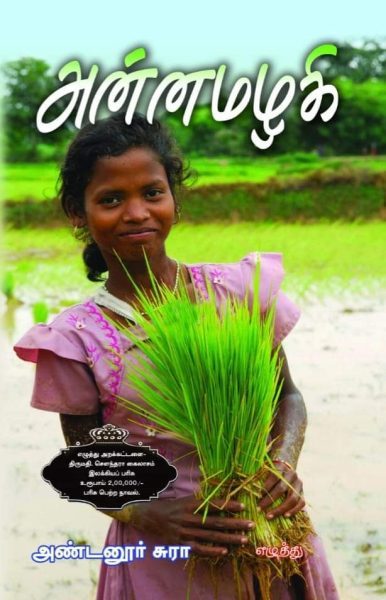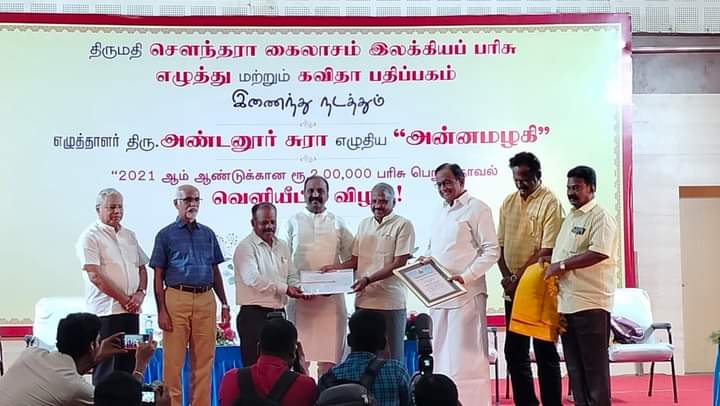
Remembering Annamazhagi, a traditional rice variety that’s now extinct
The plot of 'Annamazhagi', a novel authored by S Rajamanickam, revolves around a traditional rice variety of Tamil Nadu that has practically gone extinct now

Thanjavur district, in the Cauvery delta region in south Tamil Nadu, is often referred to as the ‘rice bowl of South India’. And, rice is the staple food of most southern states, including TN, so it is not surprising the state grew over 100 indigenous varieties of paddy once upon a time.
This number, however, has now drastically dropped to 10 varieties. According to agricultural experts, many traditional paddy varieties disappeared after the excessive use of chemical fertilisers and pesticides. Also, modern rice varieties developed by scientists are generating more returns for farmers in a short period of time. Most farmers are not interested in cultivating traditional rice varieties because the returns are low, although they are known for their medicinal properties.
Over the past decade or so, many young people have been giving up their cushy IT jobs to pursue organic farming as a full-time career. Inspired by farmers like Nammalvar and Nel Jayaraman, many of these nouveau farmers are starting to revive and conserve some of these traditional rice varieties, which are believed to have gone extinct or not much in use.
Also read: Lit fest around Chennai book fair will help Tamil publishing industry: Badri Seshadri
It is in this backdrop, a Tamil novel published recently talks about one such traditional paddy variety – Annamazhagi – that has gone extinct. Annamazhagi, the book authored by S Rajamanickam under the pseudonym Andanoor Sura, and published by Kavitha Publication, Chennai, has won the Thirumathi Soundara Kailasam Literary Prize constituted by Ezhuthu Trust. The trust was founded and the award instituted by former Union Finance Minister P Chidambaram, in memory of his mother-in-law. The award carries a cash prize of ₹2 lakh.

The aphrodisiac qualities of Annamazhagi
Annamazhagi, the rice variety, purportedly has aphrodisiac qualities and the grains are known for their sweetness. A poem by Tamil saint Agasthya praises it for its medicinal properties. However, due to the lack of solid documentation, it is not even clear which part of the state the variety was largely grown.
Also read: Tamil publishing industry is thriving. Chennai Book Fair is major part of the reason
The novel starts with Kooththan, a sexagenarian farmer, who lives with his wife Kannammal and son Soman, realising that his Annamazhagi paddy seeds kept in his house has been stolen. He then tries to hunt down the person and the motive behind the theft.
In his efforts to retrieve the seeds, he comes in contact with his younger sister Kalyani, who had severed her relationship with him following a clash between him and her husband. His efforts to find the Annamazhagi paddy seeds help the brother and sister to reunite. Whether Kooththan finds the man behind the theft and is able to reclaim the seeds forms the rest of the plot.
Interestingly, the novel also talks about another rice variety, Koolamadhorai, that is known to reduce a person’s libido.
Inspired by real life incidents, characters
The novel is set in a village in Pudukkottai district and hence the book is full of characters talking in the dialects of that region. According to the author, the novel was inspired by real life incidents and characters.
“I am from a family of farmers. The farmers across the state, in general, believe that selling and consuming the vidhai nel (seeds which are saved separately to cultivate in the future and considered as mother seeds) are the worst form of poverty a farmer can face in his lifetime. Once, my mother was pushed to cook using the vidhai nel, during a particularly hard time,” he told The Federal in a conversation.
Also, one of his friends was advised by an elder to eat Annamazhagi to improve his fertility. “I then started to research the rice variety. These two things became the inspiration of my novel,” confessed Sura, while talking about what prompted him to pen the novel.
Kalambur Ganesan and IR8
The writer also weaves in real life characters like Kalambur Ganesan, a native of Thiruvannamalai district in the narrative. Ganesan is a progressive modern farmer, who started to cultivate modern rice varieties like IR8 and created awareness about it among fellow farmers.
Ganesan became so enthusiastic that he even named his son as IR8. This is because when his son was born in July 1968, the IRRI (International Rice Research Institute) dramatically increased the rice production of IR8 in southern India. In an interview to the World Bank in 1984, when he was asked whether he planned to name any other children after a popular rice variety, Ganesan said no. But, he did add that it was possible that his grandson may be named IR50, sometime in the future.
This kind of trivia keeps the reader engaged in the book.
‘Traditional varieties are not profitable’
Asked why farmers are no longer interested in cultivating this particular rice variety, Sura said that it is not grown because it is just not profitable for the farmers.
“Most of the farmers cultivate traditional rice as subsistence farming. This particular variety’s yield is low and also it takes six months to cultivate. So, the farmers are reluctant to opt for this variety,” said Sura, who works as a mathematics teacher in a government school in Pudukkottai.
He also warned not to take at face value the claims made by many farmers about traditional rice varieties. “The times have changed and the traditional rice varieties cannot be mass produced to feed many and that is the reality,” pointed out Sura.

